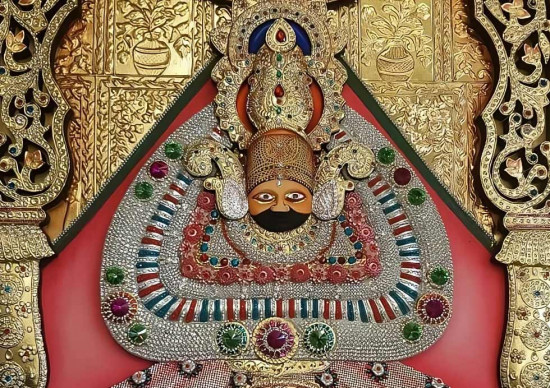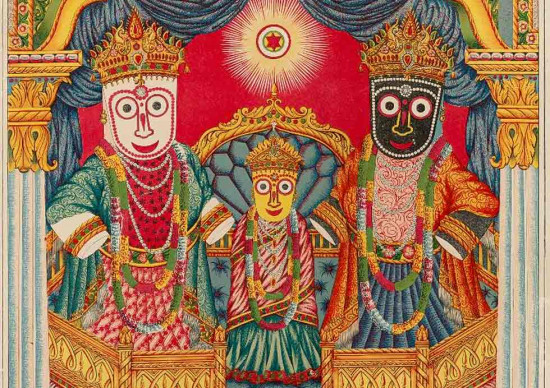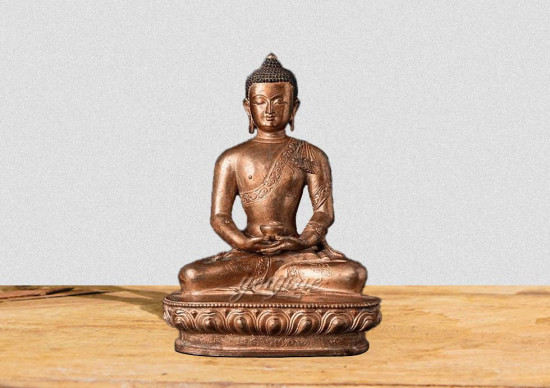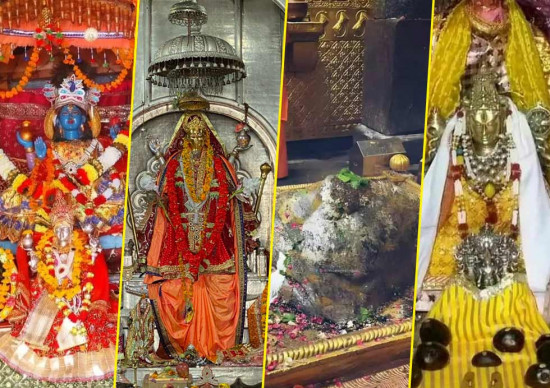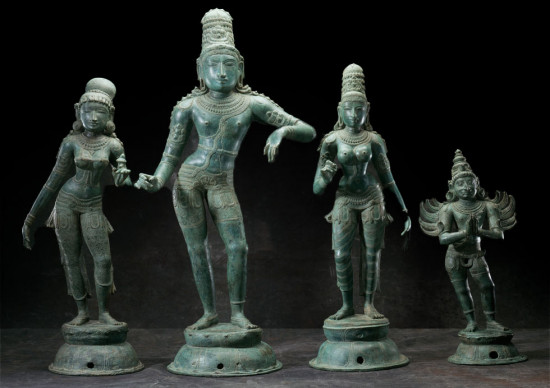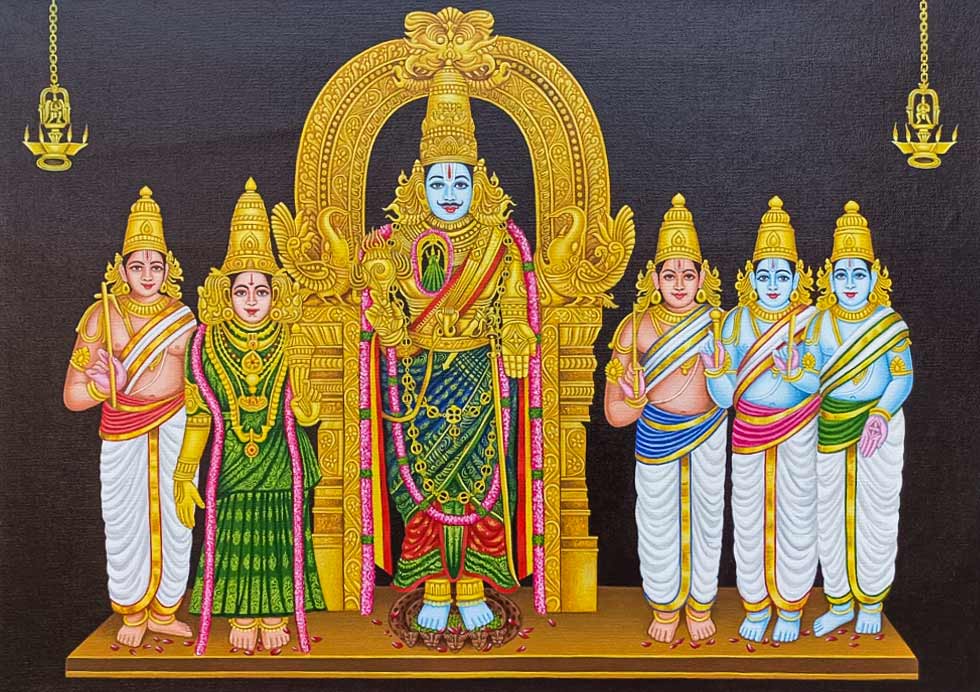
Nestled in the heart of Chennai in Triplicane, the Parthasarathy Temple is not just a place of worship but a testament to the rich cultural heritage of India. This ancient temple, dedicated to Lord Krishna. This Parthasarathy temple of Triplicane is steeped in history, architecture, and spirituality, attracting thousands of devotees and tourists alike. Here Lord Krishna is worshiped in the form of sarathy of Arjuna in the war of Mahabharata. This is the first form of Lord Krishna which is depicted with a mustache in India.
Krishna as Charioteer: God's Unwavering Support for His Devotee
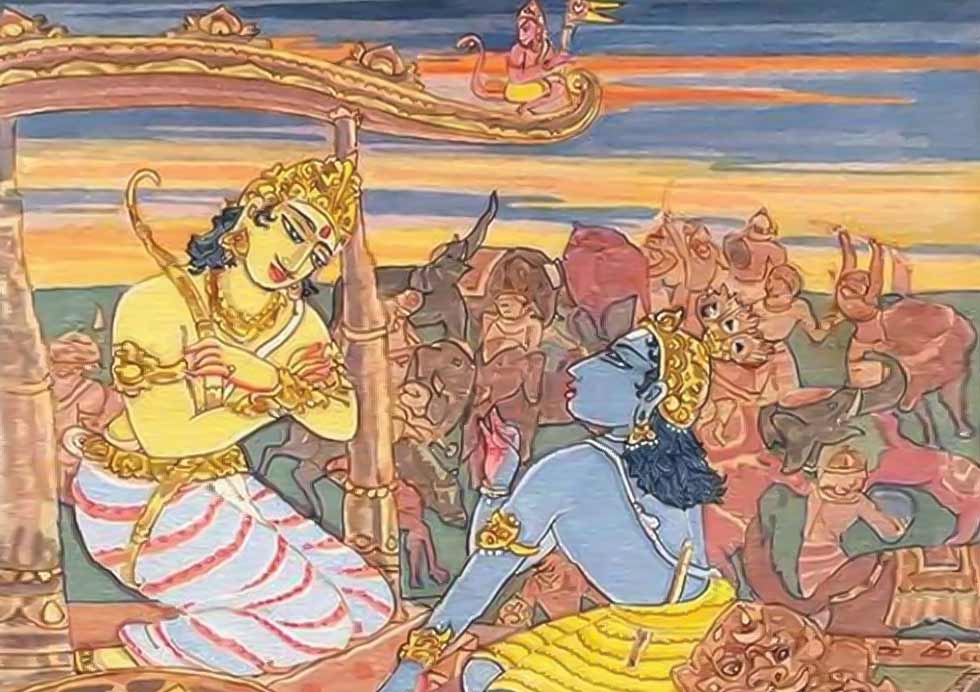
The Parthasarathy temple is dedicated to Lord Krishana in his Sarthy form (Charioteer of Arjuna) from the Mahabharata. Lord Krishna plays a major and unique role in Mahabharata. He gives the Knowledge of Geeta to the world. This sacred book is full of wisdom about life, duty, and the right way to live. It's still read and studied by people all over the world today.
In the sanctum of the Parthasarathy Temple, Lord Krishna is shown with his family: his wife Rukmini, Mother Mahalakshmi on his chest, his brother Balarama on his right, and Satyaki on his left. His son Pradyumna and grandson Aniruddha are also nearby.
.jpg)
Normally, Lord Krishna carries a discus as his main weapon, but here, Krishna does not have it. He made a vow to help the Pandavas in the war without using any weapons. As Parthasarathy, he appears with only a conch shell to announce the war. He is shown with just two hands, like a human, and this is the only form of Krishna where he has a mustache. As a charioteer, the Lord adorned with a mustache (as a symbol of dignity and wisdom). So he is also known as Meesai-Perumal (God with a mustache) in Tamil. Notably, during the Day 10 (Pagal Pathu) celebrations of Vaikunda Ekadasi, he is presented without his mustache for a few days.
This form of Lord Krishna shows that he offers everything to his devotees. He promised Arjuna to support him in the battle against the Kauravas. Krishna had already given his army, called the Narayani Sena, to Duryodhana, which was considered the greatest army of all time. So, here, Krishna supports Arjuna with what he has—his family.
His brother Balarama is with him, along with his wife Rukmini. Satyaki, a strong Yadava warrior, is also present. Krishna’s eldest son Pradyumna is there too. He is important because he is seen as a form of Lord Vishnu and said to be reborn as Kamadeva, the god of love. According to the Mahabharata, Pradyumna is a part of Sanat Kumara.
Lastly, Krishna’s grandson Aniruddha is with them. Aniruddha, who was the son of Pradyumna and Rukmavati, is said to be very much like Krishna. He is also said to be an avatar of Lord Vishnu.
This temple is distinctive as it features multiple deities—Lord Venkatakrishna in the main sanctum, along with Lord Ranganatha and Lord Sri Rama in nearby shrines. The presence of Lords Gajendravarada and Yoga Narasimha in the prakara adds to its significance, making it a celebrated Panchamurti Sthala. In the Ranganatha shrine, Lord Varaha is depicted at the head and Lord Narasimha at the feet, commemorating their attendance at Lord Ranganatha's wedding to Vedavalli.
Yoga Narasimha is revered as the first deity of the temple, with the day’s first puja dedicated to him. This shrine is unique; its bells lack the sound-producing tongues, as any noise would disrupt the tranquility sought in the practice of yoga. Devotees often offer salt and pepper at his feet, seeking relief from ailments.
The Parthasarathy Swamy Temple: A Divine Legacy of Lord Krishna in Chennai
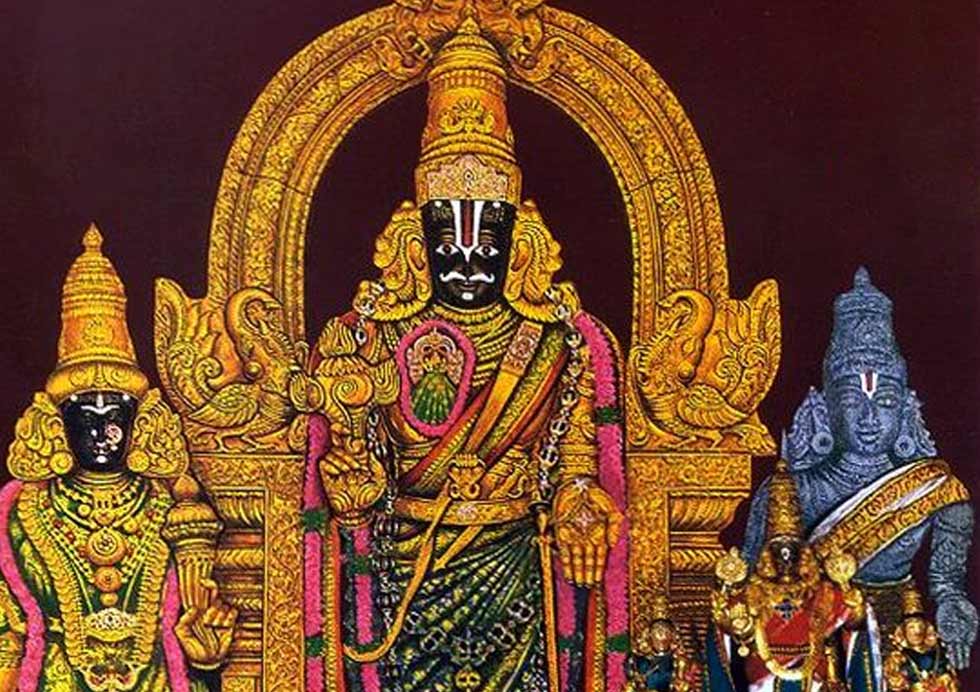
According to the story, the Saptarishis, or seven sages, worshiped five important deities known as the Panchaveeras: Venkata Krishnaswamy, Rukmini, Satyaki, Balarama, Pradyumna, and Aniruddha. In the Mahabharata, Lord Vishnu, in his form as Krishna, served as the charioteer for Arjuna, the Pandava prince, during the battle against the Kauravas. Krishna chose not to use any weapons during the war. However, during a fight with Bhishma Pitamaha, Krishna was injured by an arrow, and the mark from this injury is still believed to be visible in the temple's idol.
The area is known as Allikeni, which means "pond of lilies," because it was once filled with lily ponds. Uniquely, this temple is the only place where the main deity is depicted with a mustache.
The Parthasarathy Swamy Temple is one of the 108 Divya Desams, an important group of temples dedicated to Lord Vishnu. This temple was built by King Narasimhavarman I of the Pallava dynasty in the 8th century and is located in Thiruvallikeni, Chennai, India. The traditional name for this area is "Brindaranya."
King Sumathirajan, a devoted follower of Lord Vishnu, had a strong wish to see the Lord as the charioteer of Arjuna on the battlefield of Kurukshetra. He prayed earnestly for this divine vision, and the Lord granted his request by appearing as the charioteer of Partha (Arjuna).
The king pleaded with the Lord to remain in that form at the same place. In this appearance, Lord Krishna holds only his conch and does not carry his discus. During the battle, he absorbed the arrows shot by Bhishma that were aimed at Arjuna, sustaining injuries in the process. These scars can still be seen today.
As Lord Krishna grew more beloved among the devotees, the temple became known as the Parthasarathy Temple, with the charioteer form of the Lord as its main deity.
There is also another story associated with this divine temple according to the Brahmanda Purana.
King Sumathirajan prayed to Lord Thiruvengada (another name for Lord Vishnu) on the Seven Hills. He wished to see the Lord as the charioteer (Sarathy) of Partha (Arjuna) during the Mahabharata war, while he delivered the teachings of the Bhagavad Gita.
In response to his prayer, Lord Thiruvengada appeared to the king in a dream and instructed him to go to Brindaranya ( known as Thiruvallikeni today), where he would give him the darshan as he desired.
Meanwhile, Athreya Maharishi asked his teacher, Vedavyasa, for a suitable place to perform penance. Vedavyasa directed him to Brindaranya, where King Sumathirajan was already meditating by the Kairavani Theertham, surrounded by Tulasi plants.
Vedavyasa also gave Athreya a divine idol of Krishna, who holds a conch in his right hand and makes a gesture of wisdom with his left hand, pointing to his holy feet.
King Sumathirajan was delighted to see the idol, as it matched his wish. They built a temple and celebrated the Chaitrotsavam festival according to the Vaikanasa Agama, beginning their worship of the Lord.
This is the only place where Lord Krishna is depicted without his Sudarshana chakra, as he vowed not to use any weapons during the war. Lord Krishna as Parthasarathy, is worshiped as a 9-foot tall idol. As a charioteer, he is shown with a mustache, symbolizing dignity and wisdom, and is affectionately called Meesai-Perumal (God with a mustache) in Tamil.
In the main sanctum of the temple, the central figure is worshipped as Sri VenkataKrishna Swamy. To his right is his wife Rukmini and to his left is Satyaki, his younger brother. His elder brother Balarama is seen next to Rukmini, facing north. His son Pradyumna and grandson Aniruddha are positioned to the north of the Garbagraha, facing south. These five warriors, known as Pancha Veeral, are arranged in this way to honor significant events from their lives.
The Parthasarathy Temple: A Historic Hindu Shrine in Triplicane, Chennai
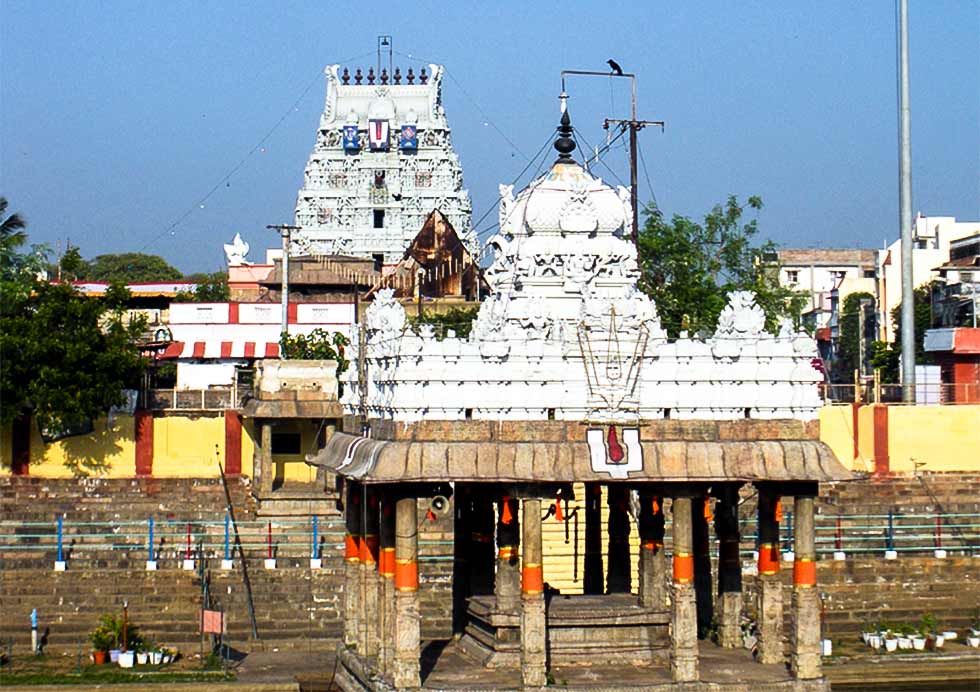
The Parthasarathy Temple, located in Thiruvallikeni, Chennai. It was originally built in the 6th century by the Pallavas and later expanded by the Cholas and Vijayanagara kings. The temple is one of the 108 Divyadesams, sacred shrines mentioned in the Divya Prabandha, a collection of 4,000 Tamil verses by the Alvars. The temple honors Lord Krishna as Parthasarathy, the charioteer of Arjuna in the Mahabharata. Inscriptions from the 8th century, including those from the Pallava king Dantivarman, can be found here, and the temple is mentioned by the poet-saint Thirumangai Alvar.
The temple features a unique depiction of Krishna with a prominent mustache, carrying a conch. In the sanctum, he is shown with his wife Rukmini, brother Balarama, son Pradyumna, grandson Aniruddha, and Satyaki. This combination of deities makes it a rare shrine dedicated to Krishna as Arjuna’s sarathy . The temple also has a sacred tank called Kairavani, surrounded by five holy water sources. Notably, the temple has been linked to the legendary seven sages and has a special shrine for Andal, one of the Alvars. The temple is managed by the Hindu Religious and Charitable Endowments Department of the Government of Tamil Nadu.
Summary
The Parthasarathy Temple in Triplicane, Chennai, stands as a vibrant testament to the rich cultural and spiritual heritage of South India. With its unique portrayal of Lord Krishna Arjuna’s sarathy (as the charioteer of Arjuna), complete with a distinctive mustache, the temple offers a rare glimpse into the divine narratives of the Mahabharata. The temple's intricate history, remarkable architecture, and the presence of multiple deities collectively create a sacred space that attracts countless devotees and visitors.
By exploring the temple's legends, rituals, and cultural significance, one not only gains insight into the life of Lord Krishna but also experiences the profound sense of community and devotion that permeates this historic site. Whether you are a spiritual seeker, a history enthusiast, or a curious traveler, the Parthasarathy Temple promises a unique journey into the heart of Hindu tradition and a lasting connection to the divine. The essence of Lord Krishna's form as Parthasarathy embodies the idea that God fully supports his devotee. He stands by his side, offering all that he has in unwavering devotion and assistance.

